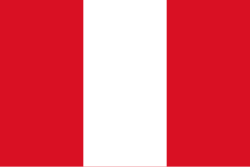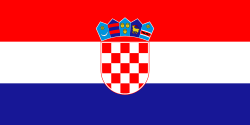WTA Tokio (Kōtō)
| WTA Tour | |
|---|---|
| Austragungsort | Tokio (Kōtō) |
| Erste Austragung | 1973 |
| Letzte Austragung | 2017 |
| Kategorie | WTA International |
| Turnierart | Freiplatzturnier |
| Spieloberfläche | Hartplatz |
| Auslosung | 32E/32Q/16D |
| Preisgeld | 226.750 US$ |
| Center Court | 10.000 Zuschauer |
| Stand: 17. September 2017 | |
Das WTA Tokio (Kōtō) (offiziell: Japan Women’s Open Tennis) war ein Damen-Tennisturnier der WTA Tour, das im Tokioter Stadtbezirk Kōtō ausgetragen wurde. Das Turnier fand erstmals von 1973 bis 1976 und erneut von 1979 bis 2008 statt. 2015 kehrte es wieder nach Tokio zurück, nachdem es zwischen 2009 und 2014 in Osaka stattgefunden hatte. Ausgetragen wurde das Turnier im Ariake Tennis no Mori Kōen, 2017 vorläufig zum letzten Mal. 2018 wird stattdessen in Hiroshima gespielt.[1]
Ein ebenfalls in Tokio ausgetragenes WTA-Turnier ist das WTA Tokio (Kategorie Premier 5).
Siegerliste
Einzel
Doppel
Einzelnachweise
- ↑ WTA 2018 Calendar, Tokyo International event moves to Hiroshima. In: tennisworldusa.org. 28. Juli 2017, abgerufen am 12. September 2018 (englisch).
Auf dieser Seite verwendete Medien
Pictograms of Olympic sports - Tennis. This is unofficial sample picture. Images of official Olympic pictograms for 1948 Summer Olympics and all Summer Olympics since 1964 can be found in corresponding Official Reports.
Flag of Australia, when congruence with this colour chart is required (i.e. when a "less bright" version is needed).
See Flag of Australia.svg for main file information.The flag of Brazil from 1968 to 1992 with 23 stars.
The flag of Brazil from 1968 to 1992 with 23 stars.
Flag of Romania, (21 August 1965 - 22 December 1989/officialy 27 December 1989).

Construction sheet of the Flag of Romania as depicted in Decree nr. 972 from 5 November 1968.
- l = 2/3 × L
- C = 1/3 × L
- S = 2/5 × l
Die quadratische Nationalfahne der Schweiz, in transparentem rechteckigem (2:3) Feld.
Flag of Canada introduced in 1965, using Pantone colors. This design replaced the Canadian Red Ensign design.
Autor/Urheber: Scroch, Lizenz: CC BY-SA 3.0
Flag of Bulgaria (1971-1990). Flag of Bulgaria with Bulgarian coat from 1971.
Autor/Urheber: Scroch, Lizenz: CC BY-SA 3.0
Flag of Bulgaria (1971-1990). Flag of Bulgaria with Bulgarian coat from 1971.
Das Bild dieser Flagge lässt sich leicht mit einem Rahmen versehen
bendera Indonesia
Verwendete Farbe: National flag | South African Government and Pantone Color Picker
| Grün | gerendert als RGB 0 119 73 | Pantone 3415 C |
| Gelb | gerendert als RGB 255 184 28 | Pantone 1235 C |
| Rot | gerendert als RGB 224 60 49 | Pantone 179 C |
| Blau | gerendert als RGB 0 20 137 | Pantone Reflex Blue C |
| Weiß | gerendert als RGB 255 255 255 | |
| Schwarz | gerendert als RGB 0 0 0 |
Chinese Taipei Olympic Flag. According to the official website of Chinese Taipei Olympic Committee, Blue Sky(circle) & White Sun(triangles) above the Olympic rings is neither the National Emblem of the Republic of China, nor the Party Emblem of Kuomintang (KMT), but a design in between, where the triangles do not extend to the edge of the blue circle, as registered at International Olympic Committee in 1981 and digitally rendered in 2013. Besides, the blue outline of the five-petaled plum blossom is broader than the red one. Moreover, the CMYK code of the blue one and the Blue Sky & White Sun is "C100-M100-Y0-K0", and different from the Olympic rings (C100-M25-Y0-K0). Note that it's the only version recognized by IOC.
State Flag of Venezuela 1930-2006, New flag was introduced 9 March 2006.
Flagge des Vereinigten Königreichs in der Proportion 3:5, ausschließlich an Land verwendet. Auf See beträgt das richtige Verhältnis 1:2.
Flagge des Vereinigten Königreichs in der Proportion 3:5, ausschließlich an Land verwendet. Auf See beträgt das richtige Verhältnis 1:2.
State Flag of Venezuela 1930-2006, New flag was introduced 9 March 2006.
Variant version of a flag of Japan, used between January 27, 1870 and August 13, 1999 (aspect ratio 7:10).


































